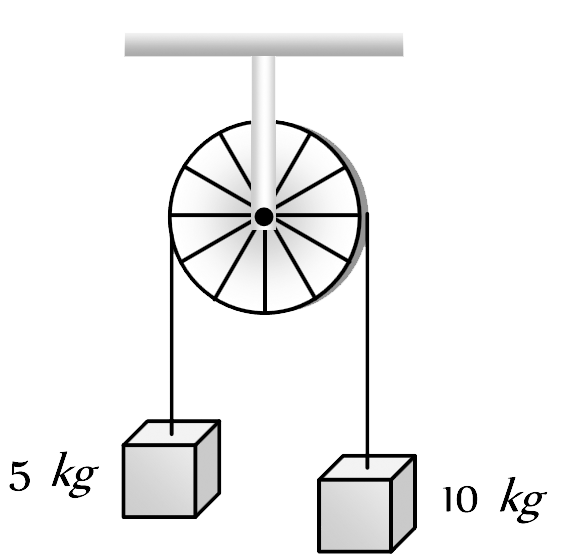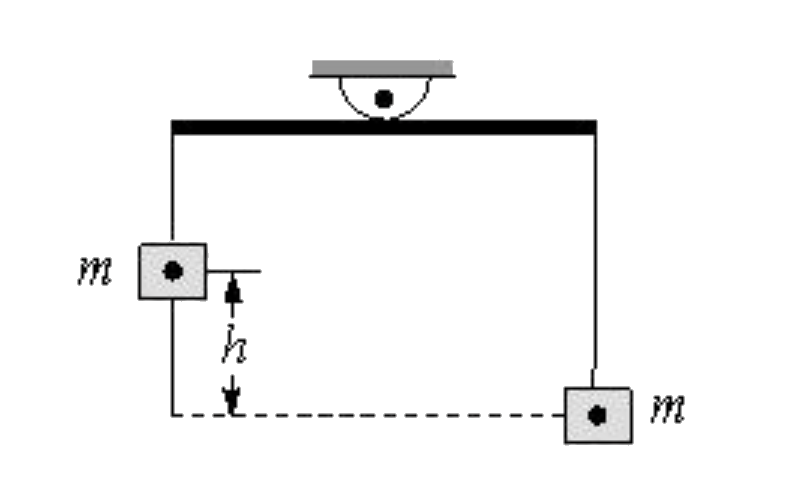Two objects of equal mass rest on the opposite pans of an arm balance. Does the scale remain balance when it is accelerated up or down in a life ?Solution in Gujrati
Yes, since both masses experience equal fictitious forces in magnitude as well as direction.
Topper's Solved these Questions
- NEWTONS LAWS OF MOTIONBOOK - ALLEN CHAPTER - NEWTONS LAWS OF MOTIONEXERCISE - SWOE
44 Videos
- NEWTONS LAWS OF MOTIONBOOK - ALLEN CHAPTER - NEWTONS LAWS OF MOTIONEXERCISE - EXERCISE-I
52 Videos
- NEWTON'S LAWS OF MOTION & FRICTIONBOOK - ALLEN CHAPTER - NEWTON'S LAWS OF MOTION & FRICTIONEXERCISE - EXERCISE (JA)
4 Videos
- RACEBOOK - ALLEN CHAPTER - RACEEXERCISE - Basic Maths (Wave Motion & Dopplers Effect) (Stationary waves & doppler effect, beats)
25 Videos
Similar Questions
A 2000 kg rocket is set for vertical firing the exhaust speed is 400 m/s to given an initial upward acceleration of 10m/s2. Find out the amount of gas ejected per second to supply the needed thrust (g=10m/s2)
View SolutionUSS 150) Two masses of 5 kg and 10 kg are connected to a pulley as shown. What will be the acceleration of the system (g= acceleration due to gravity)

View SolutionA piece of wire is bent in the shape of a parabola y=kx2 (y-axis vertical) with a bead of mass m on it. The bead can slide on the wire without friction. It stays at the lowest point of the parabola when the wire is at rest. The wire is now accelerated parallel to the x-axis with a constant acceleration a. The distance of the new equilibrium position of the bead, where the bead can stay at rest with respect to the wire, from the y-axis is:
View SolutionThe frequency of a radar is 780 MHz. After getting reflected from an approaching aeroplane, the apparent frequency is more than the actual frequency by 2.6 kHz. The aeroplane has a speed of
View SolutionTwo equal masses each in are hung from a balance whose scale pans differ in vertical height by h. The error in weighing in terms of density of the earth ρ is
View SolutionTwo equal masses are kept on the pans of a simple balance in a lift acceleration upward. Then.
View SolutionA false balance has equal arms. An object weights W1 when placed in one pan and W2 when placed in the other pan. The true weight W of the object is.
View SolutionTwo equal masses each m are hung from a balance whose scale pans differ in vertical height by h. The error in weighing is
View SolutionAssertion :− Two objects of equal mass rest on the opposite pan of an arm balance. Scale will remains balanced, when it is accelerated up or down in a lift.
Reason :− Both masses experience equal fictitious forces magnitude as well as direction.
View SolutionA false balance has equal arms. An object weigh X when placed in one pan and Y when placed in other pan, then the weight W of the object is equal to
View SolutionA beaker containing water is balanced on the pan of a common balance. A solid of specific gravity 1 and mass 5 g is tied to the arm of the balance and immersed in water contained in the beaker. The scale pan with the beaker.
View SolutionTwo identical blocks of mass m are suspended from a beam balance whose scale pans differ in vertical height by h(<<R), if R and ρ are the radius and density of the earth, then the error in weighing is

View SolutionTwo bodies of equal masses are kept on the scale pans of a beam balance in a lift. If the lift starts moving up with an acceleration, will the beam balance be in equilibrium?
View SolutionTwo arms of a common balance are unequal. How can the balance be used to find the correct mass of an object?
View SolutionLengths of the arms of a balance are equal but the weights of the pans are different. When an object is put on the left pan, it weighs W_(1) and on the right pan it weighs W_(2) . What is the actual weight of the object?
View SolutionThe lengths of left and right arms of a balance are 10.5 cm and 10 cm respectively. Without the scale pans, the balance remains horizontal. Even with two scale pans of different masses the balance remains horizontal. Keeping a body on the right pan, equilibrium is achieved by putting a counterpoising 100-g weight on the left pan. What is the actual mass of the body?
View Solution